Contents
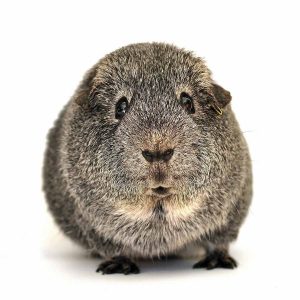
Bringing new pets into the home is always exciting, whether it be for new pet owners or homes with established animals. While introducing a new dog to the older resident dog of the house is a tricky situation in and of itself, introducing different species is a whole other ball game. Taking these necessary, life-saving steps when introducing your pets is crucial to fostering harmonious relationships within the household.
As a disclaimer, pet owners have to be aware of the possibility that their animals might not get along due to personalities and instincts. Make sure you are ready to accept this and act accordingly to make your animals’ lives the best they can be.
1. Consider The Dog And The Guinea Pig
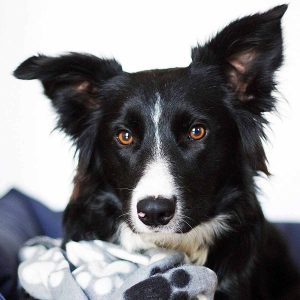
Before you do anything, every pet owner should evaluate their already established pets in the home. The breed and overall personality of your canine is especially important to take into consideration; some breeds were especially tailored to hunt down rodents to clean up barns and streets. These breeds include all those placed in the Terrier Group: the Parson Russell, the Rat terrier, Norfolk terrier, and the Yorkie. If you really want to have your guinea pig and puppy get along, expecting a terrier not to want to eat the little thing is not really practical.
Personality is also a major factor. If you have a very hyper dog that likes to play physically, they might unintentionally hurt the guinea pig. A lot of large dogs do not seem to know their own strength and size, thus making play time with them very dangerous for a small rodent. While dogs are known for their highly likable personas, exceptions to the rule include grumpy and territorial dogs.
But at the end of the day, your canine might be an exception to all the rules by being an older, mellow terrier that is incredibly gentle with the guinea pigs. Breeds with low prey drives, ones that were bred as livestock guardians, such as Great Pyrenees, or dogs in the herding or working groups, such as Border Collies, German Shepherds, or Newfoundlands, are great to have in the household with other non-dog pets.
2. Keep Dogs And Guinea Pigs Separated
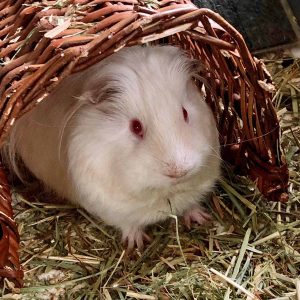
If you do decide that bringing home a new pet is something you would really like to do, it is best to keep them separated at first. This allows the new pet to get comfortable with their new surroundings and caretakers, because moving into a new house is pretty stressful on our animals.
Allow your guinea pig to have a room that the dog will not be allowed to go in, preferably one that is already prohibited to make things easier and less confusing for the dog. Guinea pigs can easily be stressed from changes in food, water, and even bedding, so the scent or sight of a dog for these prey animals could make them ill.
A new dog in the home always has to learn boundaries, and they must be kept out of the area where the guinea pig resides.
3. Introduce Through Scent
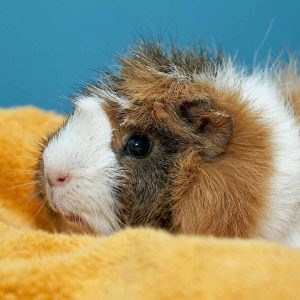
When handling either your dog or guinea pig, they will no doubt smell each other from your clothes and hands. This can be a good thing. When having good interactions with you, the owner, they are having a positive experience with both your scent and the other pet’s scent.
Treats, pats, and praise are the way to go when creating a good experience for your pets. Have your guinea pig explore a blanket that your dog likes to sleep with and place a handful of spinach down for them to snack on when they feel comfortable. Allow your guinea pig to move freely off the blanket or towel and back to their cage. You do not want to pressure them into doing something they do not want to do.
Once your guinea pig becomes comfortable with eating and getting small pats while on the dog’s blanket, take the blanket back to the dog to repeat the process with the canine. Allow your dog to be interested and sniff out the blanket before giving them a treat. Doing this allows them to become more acquainted with the guinea pig’s smell and takes the edge off from their excitement when they finally do meet one another.
4. Barriers And Meeting
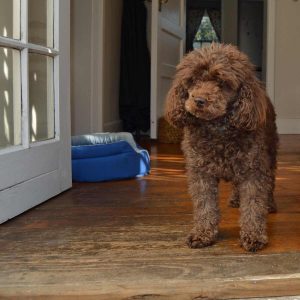
Once things have settled down and all of your pets are in a comfortable routine, it is then you can try making a change. Meeting without barriers is the first mistake that pet owners make when introducing new animals. A barrier, where they can see each other or not, is a necessary precaution to take before meeting face to face because it allows each animal to be in the same area that is controlled.
The best way to start doing these meetings is with a closed door between the dog and guinea pig. Both animals can smell and hear each other but cannot see the other pet. Eliminating one of the senses when doing these meetings might seem like backward logic but it actually makes it less stimulating and overwhelming for each animal. Both pets learn each others’ smells in a more or less direct fashion while getting used to the sounds each make.
Important notes to take are to not rush the guinea pig and to calm the dog. You cannot pressure a small prey animal into liking a large animal that might have a big enough mouth to eat them whole; you have to gently guide them with positive experiences and let them escape to a secure area (like their cage) if they feel threatened. Your dog, on the other hand, might become very excited by the possibility of meeting a new friend. You must teach the dog how to calm down and enjoy the presence of the other animal without getting too wild.
5. Meeting Face To Face
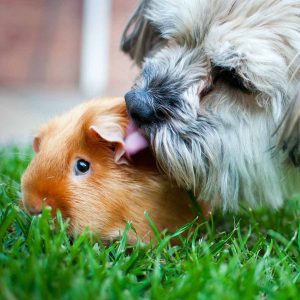
After all the hard work of getting the pets used to each other through hearing and smell, it is time to have them meet to incorporate the last sense: sight. All precautions must be taken, because pet owners truly do not know how their dog or guinea pig will react.
Both animals should be contained — the dog on a leash and the guinea pig in a playpen or travel container. While leashed, the dog should be controlled by another person whom they know and trust. This person should also be familiar with the dog’s personality and body language.
While the guinea pig is safely contained, have your dog approach slowly to sniff it. If the guinea pig shows any signs of stress, like rapid breathing, baring their teeth, or trying to squirm away, retract immediately and try again later after the guinea pig has calmed down. The same goes for the dog. If the dog reacts with too much excitement or aggression, retract immediately. Repeat this step until the guinea pig and dog are both comfortable and show no signs of distress or aggression. Take it slow. Try controlled, short interactions like this every day. If the animals show no signs of improvement within a few weeks, you will have to accept that your guinea pig and dog won’t be face-to-face friends.
If both the guinea pig and dog are calm and show no signs of distress in each other’s presence, you can try the next step. Allow your guinea pig to explore an enclosed area where you, another person, and the dog all sit. The dog must be leashed and kept in a Down position. Allow the guinea pig to move about and investigate the dog at leisure. This gives the guinea pig the choice to back off, but increases their confidence that the dog will not lunge at them or harm them.
Facts To Keep In Mind
Even if your dog and guinea pig are completely calm, always supervise your pets when the smaller animal is out of the cage. If your dog starts to get rowdy with zoomies, immediately put the guinea pig away to avoid it being trampled. Be aware that all face-to-face interactions hold an element of risk for the guinea pig. Even a well-intentioned dog might accidentally play too roughly. Pets that get along for years might still experience an accident.
If this seems like too much for you as a pet owner, it might not be the best time to introduce a new animal into the household. On the other hand, both animals can safely occupy the same house, but may not be able to interact. You want to give each pet the care and attention they deserve while making it fun for you as well, not a chore.




